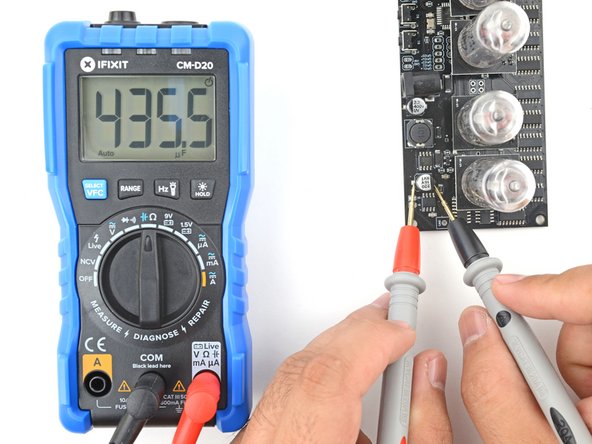crwdns2935425:09crwdne2935425:0
crwdns2931653:09crwdne2931653:0




How to measure capacitance (large capacitors)
-
Turn the function dial to the resistance/capacitance mode and press the blue select button to toggle on the capacitance mode.
-
Touch the probes to each end of the capacitor to make a measurement.
crwdns2944171:0crwdnd2944171:0crwdnd2944171:0crwdnd2944171:0crwdne2944171:0